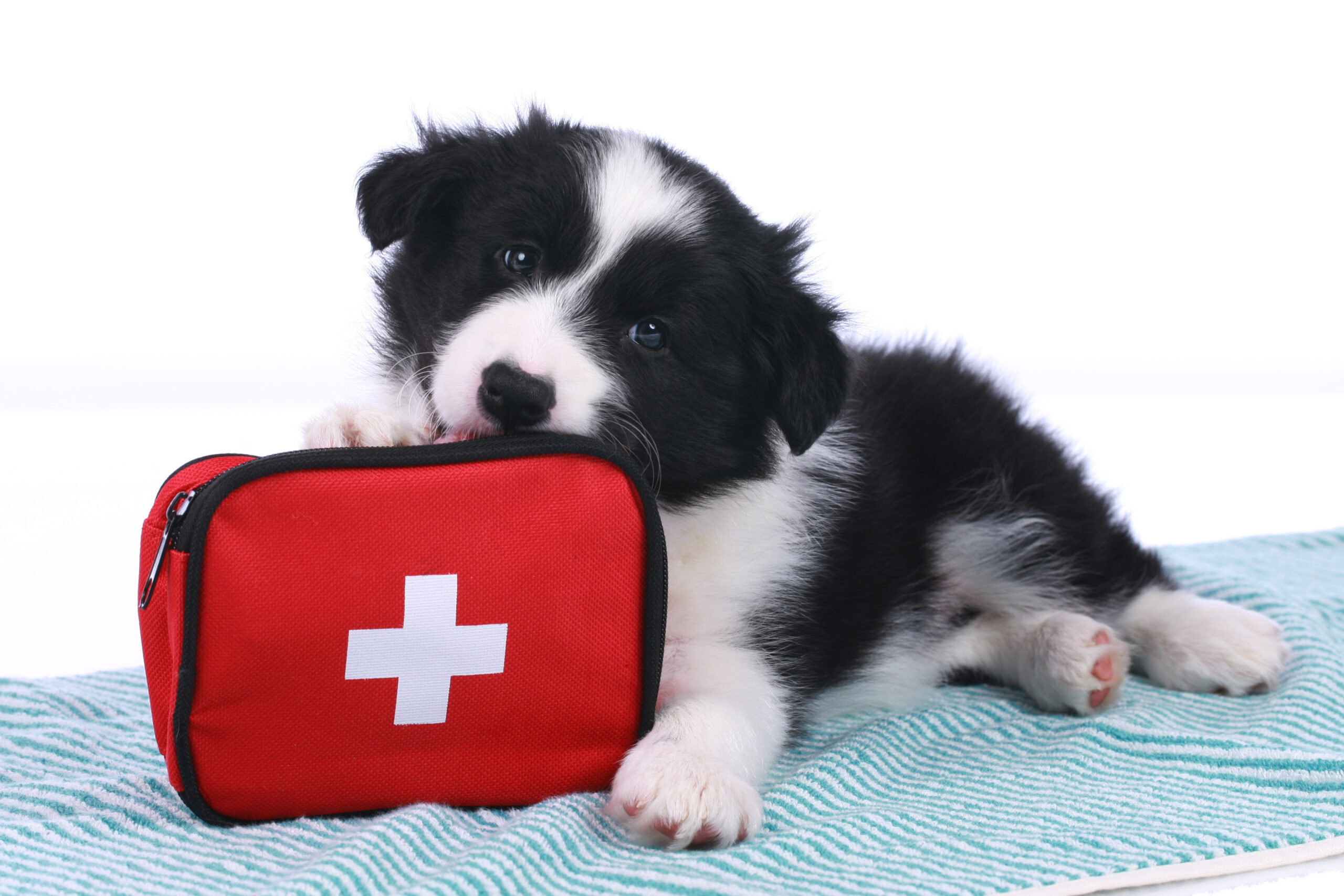
How to Create a First-Aid Kit for Your Dog by Figo
Do you have a first-aid kit for your pet? If not, you’re far from alone. According to the Northern Kentucky Tribune, only 10% of pet owners have one for their furry family members. This means that many pet owners don’t have the necessary tools to take care of even the most basic of injuries. There really is no good reason for this. A first-aid kit for your dog is relatively easy and inexpensive to create.
Items You’ll Need for Your First-Aid Kit
- Gauze Rolls
- For wrapping wounds and/or to temporarily brace a suspected break or sprain. Can also be used as a makeshift muzzle, when necessary.
- Absorbent Gauze Pads
- To protect weeping or bleeding wounds.
- Alternative: If you don’t have gauze, you could use an old t-shirt or even a clean diaper that has been cut into the appropriate size.
- Non-stick, self-adhering bandage tape
- For holding gauze or an absorbent layer in place over a wound. If possible, look specifically for rolls that were made for pets. Bonus points if you can find the water-repellent versions. Do not use human adhesive bandages on pets, which can get stuck to their fur.
- Alcohol and grooming wipes
- Alcohol and Grooming Wipes
- Dog Thermometer
- Cotton Balls
- Blunt-Ended Scissors
- Rubber Gloves
- Small Flashlight
- Ice Pack
- Plastic Syringe or Eyedropper
- For your dog’s oral medication.
- They can also be used to flush and clean out wounds.
- Benadryl
- Can be used for allergic reactions, such as to a snake or insect bite (but you should also take your pet immediately to the veterinarian).
- Pet Safe Antibiotic Lotion or Spray
- To prevent infections and relieve pain.
- Hydrogen Peroxide
- Can be used to induce vomiting if your dog has eaten something it shouldn’t have, BUT hydrogen peroxide should only be used under the guidance of a veterinarian or a poison control expert, or if you know the proper method of administering it to your pet.
- Note: Medical experts no longer recommend using hydrogen peroxide to wash out wounds. You can use it to clean the area surrounding a wound, but studies have found that hydrogen peroxide can damage skin cells and delay healing.
- Activated Charcoal
- This substance is sometimes given to dogs that have eaten certain toxic substances. It does not work on all toxins and should only be given to your pet under the guidance of a veterinarian or an expert from poison control.
- Saline Eye Solution
- For flushing irritants out of your dog’s eye(s).
- Styptic Powder, such as Kwik Stop
- This is a clotting agent that will stop the bleeding from minor cuts or nails that were cut too short.
- Alternative: Flour, baking powder or cornstarch can also be used in a pinch to stop a bleeding nail.
- Tweezers
- These can be used to remove such things as splinters or glass from your dog’s paws, or even a bee’s stinger.
Keep your first-aid kit in an area that you can get to quickly in the event of an emergency. You should also have the following stored with your kit:
- Phone numbers for your Veterinarian and the nearest Emergency Animal Clinic.
- Poison Control Phone Number: 1-888-426-4435
- Your Pet’s Medical Records
- Including their Vaccination Record
- You can also use an app, such as VitusVet, to access and share your pet’s medical records.
- Medical Guide
- While many injuries and medical situations can be treated at home, it’s also important to understand when you should take your dog to the veterinarian. Having a guide that can help you determine what is a medical emergency and what is not is another important item to keep with your first-aid kit.
- Extra Leash
- Towels
If you frequently take your pet on road trips or for activities, such as hiking, you’ll also want to keep a kit in your car or backpack, as well as some other items you might need while outdoors, including but not limited to:
- A sling or a carrier. If you’ll be hiking and your pet gets injured, you might need something to carry it out with.
- Bottled water. For hydration and for cleaning out wounds.
- A collapsible water bowl.
Finally
Equally important to having a first-aid kit on hand for your pup? Knowing how to use these items. That’s why it’s a good idea to attend a first-aid class for pets, so you’ll know how to treat your pet in the event of an emergency. Fortunately, you don’t have to spend a lot of money or even leave your home, as there are classes available online.
Hopefully, you’ll never have to use your kit or newfound skills, but if you do, you’ll at least be prepared to help your pet in its time of need.
About the Author:

Lizz Caputo
Lizz Caputo is Content Strategist atFigo Pet Insurance— provider of the industry’s best pet insurance plans. She is an animal enthusiast and owner of a rescued senior American bully.

You have a valid point! Emergencies or accidents can happen at any time. Therefore it is critical to be emotionally and physically prepared to deal with such a situation. Having the necessities for dealing with an emergency can make you feel safer and prepared to promptly tend to your cherished pet. It is, however, equally necessary to take an online pet first-aid course.
I agree! Taking a Pet First Aid and CPR Course is very important as well!
Hey there! Great article on creating a first-aid kit for dogs! Just wondering if you have any suggestions on must-have items that I should include in my dog’s kit?